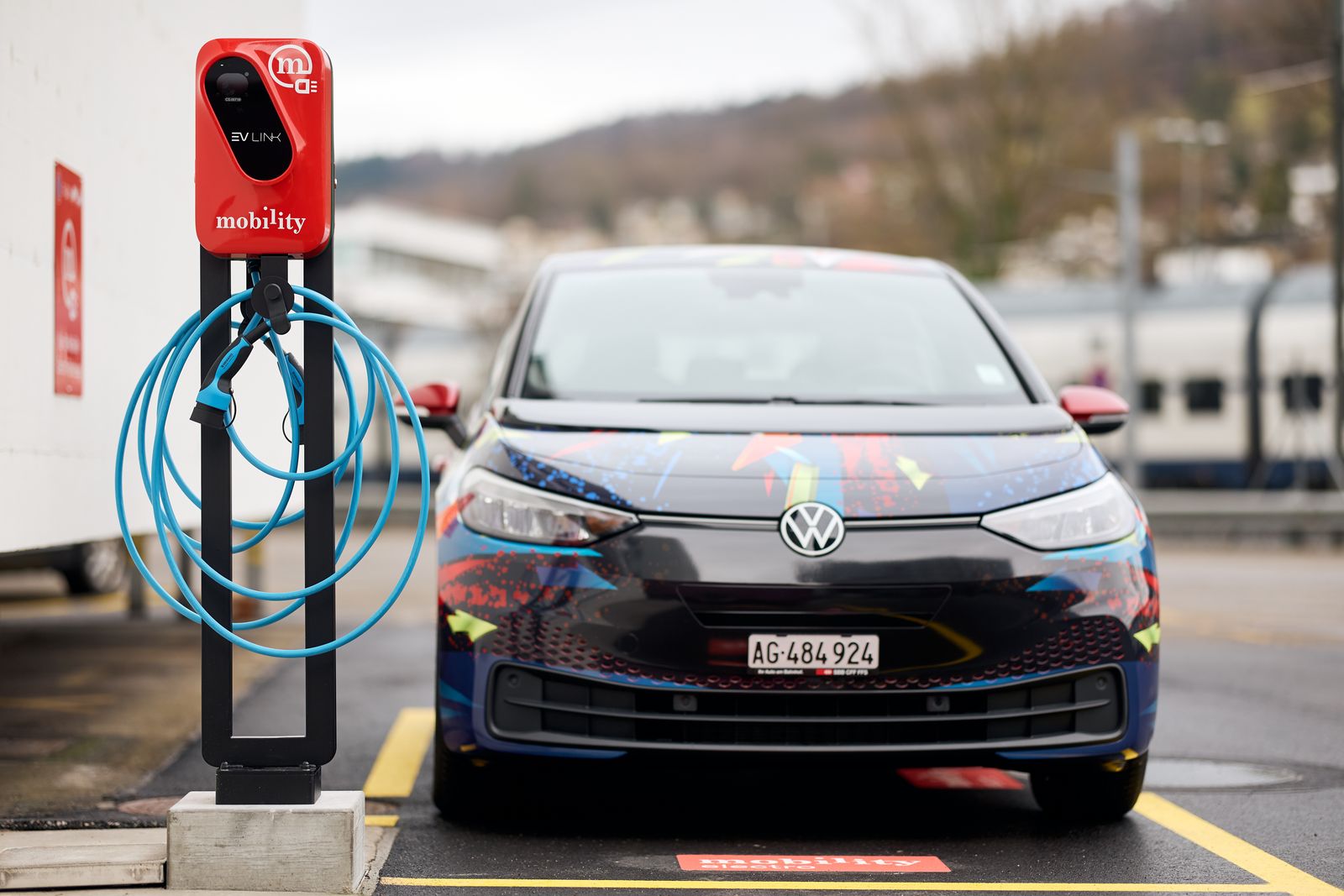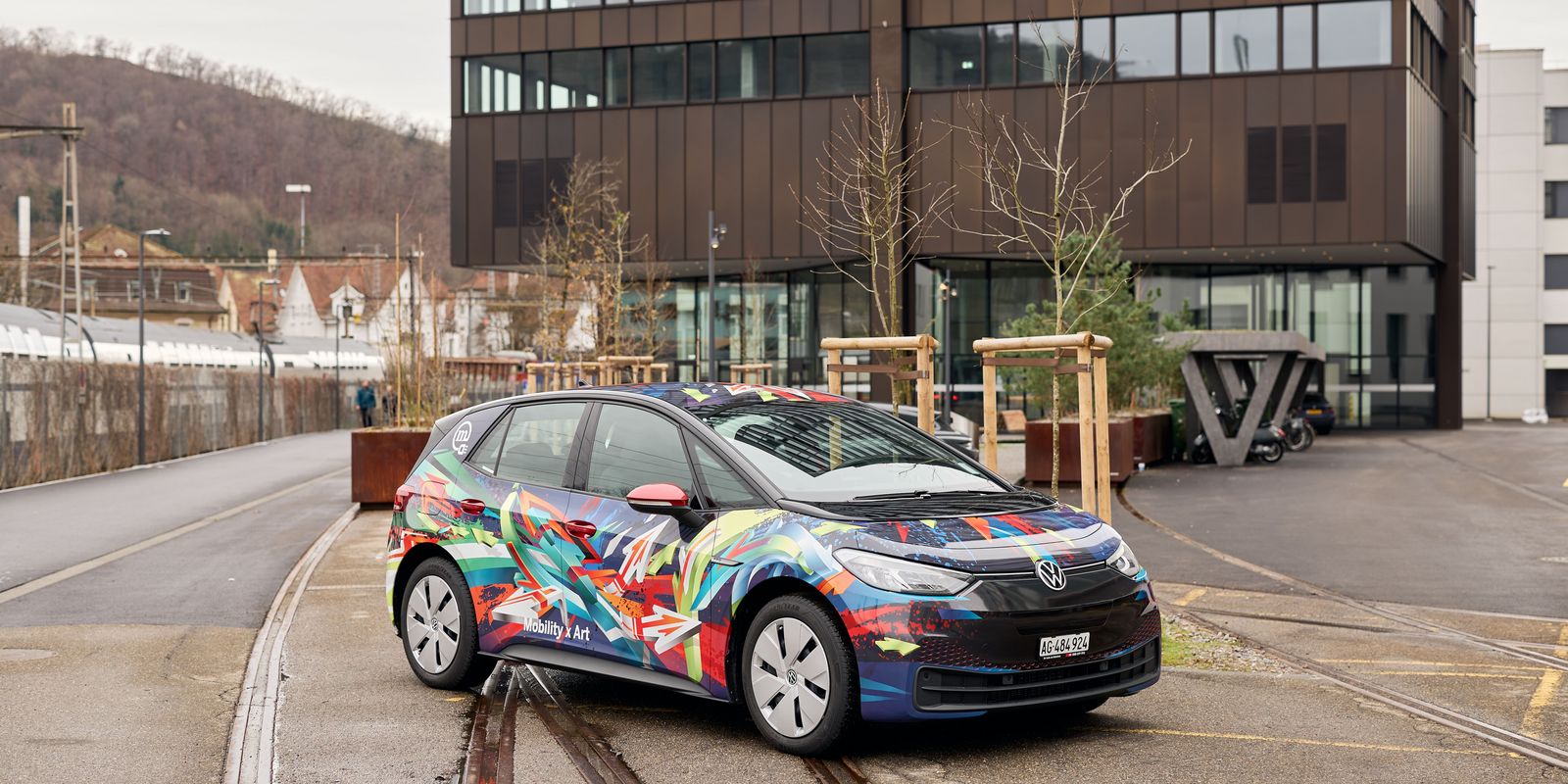The city of Baden has gained yet another attraction. The 68-metre Akara Tower – the city’s tallest building – was completed at the ABB site a few months ago. Spread over a total of 19 floors, it is home to 150 apartments and some 2’200 square metres of space dedicated to commercial use, offices and services. One particular highlight: the rooftop terrace areas can be booked for events and private functions.
That means great prospects for the people of Baden, but Mobility is delighted with the Akara Tower, too: “Projects like this are an opportunity for us to open up new stations,” says Gianluigi Gianforte, who is responsible for the Aargau and Zurich regions at Mobility. No sooner said than done: tenants who live in the Akara Tower and anyone else interested will now find two new Mobility vehicles parked right in front of the impressive skyscraper. One of them is the 500th Mobility e-vehicle. For once, it doesn’t come in the hallmark red finish typical of Mobility but bears a special wrap to match the theme of electrification: this splash of colour on wheels was designed by the artists’ collective REAL Crew.
Car sharing is particularly popular in Baden
With the launch of its 500th electric car, Mobility has reached another milestone along the way to achieving full electrification by 2030. Yet the fact that this happened in Baden of all places came about by chance. “We’re really pushing ahead with the switch to electric vehicles throughout the country,” says Magdalena Balogh, Head of Market Development at Mobility. But the Baden station is definitely a good fit, she says: “Car sharing and electrification are very popular in this region.” One reason for this is that the city specifically promotes the installation and use of electric charging stations. There are twelve Mobility e-cars at Baden railway station, for example. Almost 56% of Mobility cars stationed in Baden are electrically powered – “a very high figure,” as Magdalena Balogh points out.
The 500th electric car might just as well have been placed in Basel, Geneva or Zurich, but Gianluigi Gianforte is proud of the new station. “The project shows we’re on the right track.” The 34-year-old has been with Mobility for seven years. He’s seen a lot of changes in his work during this time. After all: “Creating a station with electric charging is much more complex than providing a conventional parking space.” Mobility currently allows six months for setting up an e-station – around six times longer than for a conventional station.

Every new station is a benefit
“Every station with electric power involves a lot of passion and hard work,” says Gianforte. But it’s well worth it. “Considering that one Mobility car replaces eleven privately owned cars, the commitment is worth it every time.” This is what Magdalena Balogh believes, too. What makes the Akara Tower station particularly attractive, she says, is the fact that it’s a new building combining both modern residential and commercial spaces. “Nowadays, mobility is a key factor in connection with new construction projects right from the planning stage,” she explains. Thanks to partnerships, Mobility is already involved during the planning phase. “That makes our work easier.” At existing stations, converting to electric vehicles sometimes poses major challenges.
17% of Mobility cars run on electric power.
Whether newly established or at an existing station: thanks to the consistent expansion of the electric fleet, around 17% of Mobility’s total of 3’000 cars are now electric. By comparison: in 2023, only 3.3% of cars on Switzerland’s roads were purely electric. Mobility is moving at a fast pace – and so is the learning curve. “We gain valuable experience with every one of our projects,” says Magdalena Balogh. “This motivates us to stick to our goal of achieving full electrification by 2030.” The next milestone is bound to follow soon.

Photos: Patrick Besch
Your comments will be posted within 24 hours.

Your comment